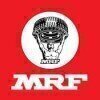


i
Filter interviews by
Napino Auto & Electronics Production DET Interview Questions and Answers
Napino Auto & Electronics Production DET Interview Experiences
2 interviews found
(1 Question)
- Q1. What is this eley
I appeared for an interview before Apr 2024, where I was asked the following questions.
- Q1. What's qualifications
- Ans.
Qualifications refer to the education, skills, and experience required for a specific role or profession.
Educational background: A degree in a relevant field, e.g., a Bachelor's in Engineering for a Production DET role.
Certifications: Industry-specific certifications, such as Six Sigma or Lean Manufacturing, can enhance qualifications.
Work experience: Relevant experience in production or manufacturing settings is cruci...
- Q2. What is your aim
- Ans.
My aim is to contribute to innovative production processes that enhance efficiency and quality in manufacturing.
To streamline production workflows, reducing waste and improving output.
To implement advanced technologies, such as automation and AI, to optimize operations.
To foster a culture of continuous improvement, encouraging team collaboration and feedback.
To ensure high-quality standards by integrating quality contr...
Interview Preparation Tips
Top trending discussions






Interview questions from similar companies

I appeared for an interview before Apr 2024, where I was asked the following questions.
- Q1. Do you want to this job
- Q2. What is your department
- Ans.
The Production Department focuses on the planning, coordination, and execution of manufacturing processes to ensure efficient output.
Oversees the entire production process from raw materials to finished goods.
Implements quality control measures to maintain product standards.
Coordinates with supply chain and logistics for timely delivery of materials.
Utilizes production scheduling software to optimize workflow.
Trains st...
- Q3. You are selected
Interview Preparation Tips

Senior Engineer Interview Questions & Answers
Samvardhana Motherson Groupposted on 19 Jan 2021
I appeared for an interview in Jul 2020.
Interview Questionnaire
1 Question
- Q1. Waht is your achievements
- Ans.
I have achieved several milestones throughout my career as a Senior Engineer.
Successfully led a team of engineers to develop and implement a new software system, resulting in a 20% increase in efficiency.
Received recognition for designing and implementing a cost-effective solution that reduced production downtime by 30%.
Contributed to the development of a groundbreaking technology that revolutionized the industry, lead...
Interview Preparation Tips

I applied via Naukri.com and was interviewed in Dec 2020. There were 3 interview rounds.
Interview Questionnaire
1 Question
- Q1. Core Java, J2EE
Interview Preparation Tips

I applied via Recruitment Consultant and was interviewed before Jun 2020. There was 1 interview round.
Interview Questionnaire
7 Questions
- Q1. Which types of lacquer used on lens and Housing ?
- Ans.
The types of lacquer used on lens and housing include acrylic lacquer, polyurethane lacquer, and epoxy lacquer.
Acrylic lacquer is commonly used on lens and housing due to its high transparency and UV resistance.
Polyurethane lacquer provides excellent durability and chemical resistance, making it suitable for lens and housing.
Epoxy lacquer offers superior adhesion and impact resistance, making it a preferred choice for ...
- Q2. What is size fine filter ?
- Ans.
A size fine filter is a type of filter used to remove small particles or impurities from a fluid or gas.
Size fine filters are commonly used in industries such as manufacturing, pharmaceuticals, and food processing.
They are designed to capture particles that are smaller than what can be filtered by regular filters.
These filters can be made of various materials such as paper, fabric, or synthetic fibers.
Examples of size ...
- Q3. On which material direct metalizing is applicable ?
- Ans.
Direct metalizing is applicable on materials that can conduct electricity.
Direct metalizing is a process of coating a non-metallic surface with a thin layer of metal.
The material should be able to conduct electricity for direct metalizing to be applicable.
Materials like plastic, glass, and ceramics can be direct metalized.
Direct metalizing is commonly used in the automotive, aerospace, and electronics industries.
- Q4. PC Material
- Q5. How much UV energy is required for curing?
- Ans.
The amount of UV energy required for curing depends on the type of material being cured and the intensity of the UV light.
UV energy required for curing varies depending on the material being cured
Intensity of the UV light also affects the amount of energy required
UV energy is typically measured in Joules per square centimeter (J/cm²)
Examples of materials that require UV curing include adhesives, coatings, and inks
- Q6. 2500 ~ 3500
- Q7. How much DFT is required as per standard ?
- Ans.
The amount of DFT required as per standard varies depending on the specific industry and project requirements.
The required amount of DFT (Design for Testability) is determined by industry standards and project specifications.
Different industries may have different standards for DFT.
The complexity and size of the project also influence the amount of DFT required.
DFT techniques include scan chains, built-in self-test (BI...
Interview Preparation Tips

Senior Engineer Interview Questions & Answers
Samvardhana Motherson Groupposted on 1 Jun 2020
I applied via Naukri.com and was interviewed in May 2020. There were 4 interview rounds.
Interview Questionnaire
3 Questions
- Q1. What are the die casting and machining defects?
- Ans.
Die casting and machining defects are common in manufacturing processes.
Die casting defects include porosity, shrinkage, cold shuts, and flash.
Machining defects include burrs, chatter marks, and tool marks.
Die casting defects can be caused by improper temperature, pressure, or metal flow.
Machining defects can be caused by dull tools, improper speeds and feeds, or poor fixturing.
Defects can lead to part failure, reduced...
- Q2. What is the formula of filling and high speed ratio?
- Ans.
Filling and high speed ratio formula is used to calculate the filling time of a container with a specific volume of liquid at a given flow rate.
Filling and high speed ratio formula is V/Q
V is the volume of the container and Q is the flow rate of the liquid
The formula is used to determine the time it takes to fill a container with a specific volume of liquid at a given flow rate
The higher the flow rate, the faster the c...
- Q3. Why do u want to join Motherson?
Interview Preparation Tips

I applied via Referral and was interviewed in Aug 2023. There were 3 interview rounds.

(4 Questions)
- Q1. Production related and experience related
- Q2. What about your experience
- Q3. How to handle manpower
- Ans.
Manpower can be effectively handled by proper planning, communication, delegation, and motivation.
Plan ahead to allocate resources efficiently
Communicate clearly with team members to set expectations
Delegate tasks based on individual strengths and skills
Motivate and reward team members for their hard work
Provide training and development opportunities for growth
- Q4. Quality related
(1 Question)
- Q1. System and technical
Interview Preparation Tips

Senior Engineer Interview Questions & Answers
Tata AutoComp Systemsposted on 14 Nov 2024
(2 Questions)
- Q1. What is cycle time?
- Ans.
Cycle time is the total time taken to complete a process or task from start to finish.
Cycle time is a key metric in process improvement and efficiency analysis.
It helps in identifying bottlenecks and areas for improvement in a process.
For example, in manufacturing, cycle time can refer to the time taken to produce one unit of a product.
Reducing cycle time can lead to increased productivity and cost savings.
- Q2. What is line balancing
- Ans.
Line balancing is the process of assigning tasks to workstations in a way that evens out the workload and maximizes efficiency.
Involves distributing work evenly among workstations
Helps in reducing idle time and bottlenecks
Improves productivity and efficiency
Example: In a manufacturing plant, line balancing ensures each workstation has a similar amount of work to do

I applied via Approached by Company
(1 Question)
- Q1. About lithium ion battery
Interview Preparation Tips
Napino Auto & Electronics Interview FAQs
Tell us how to improve this page.
Napino Auto & Electronics Interviews By Designations
- Napino Auto & Electronics Assistant Engineer Interview Questions
- Napino Auto & Electronics Engineer Interview Questions
- Napino Auto & Electronics Diploma Trainee Engineer Interview Questions
- Napino Auto & Electronics Production DET Interview Questions
- Napino Auto & Electronics Senior Engineer Interview Questions
- Napino Auto & Electronics Quality Engineer Interview Questions
- Napino Auto & Electronics Assistant Engineer Production Interview Questions
- Napino Auto & Electronics Manager Interview Questions
- Show more
Overall Interview Experience Rating
based on 2 interview experiences
Difficulty level
Duration
Interview Questions from Similar Companies
Napino Auto & Electronics Production DET Reviews and Ratings
based on 2 reviews
Rating in categories
|
Assistant Engineer
407
salaries
| ₹1.5 L/yr - ₹4 L/yr |
|
Diploma Trainee Engineer
249
salaries
| ₹1.1 L/yr - ₹3 L/yr |
|
Engineer
178
salaries
| ₹2.2 L/yr - ₹7 L/yr |
|
Assistant Manager
175
salaries
| ₹6 L/yr - ₹14.8 L/yr |
|
Senior Engineer
150
salaries
| ₹3.9 L/yr - ₹10.1 L/yr |

Bosch

Samvardhana Motherson Group

MRF Tyres

Ceat Tyres
- Home >
- Interviews >
- Napino Auto & Electronics Interview Questions







